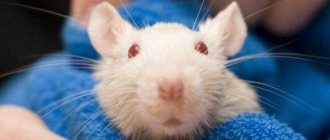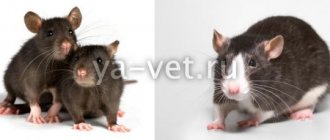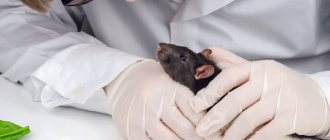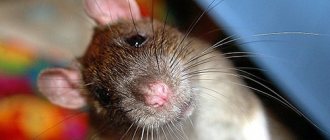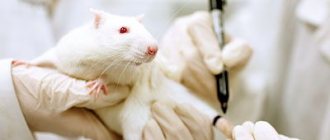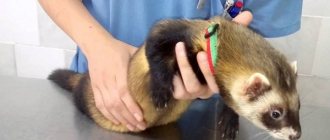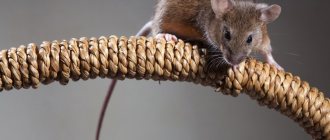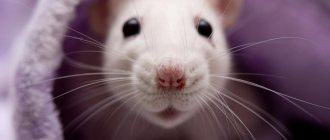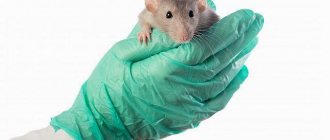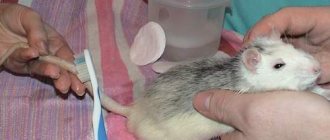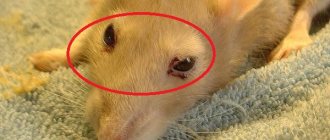Ornamental rats kept as pets are very prolific. But owners are not always ready to breed, raise and accommodate numerous offspring.
In addition, some rats show aggression during the heat period, biting and scratching. Therefore, the only way to solve reproductive and behavioral problems is castration.
Pros of castration
- Easier to maintain. Castrated males are much calmer and do not bite their relatives. Nulliparous females get sick less, so their life expectancy is longer.
- You don’t have to worry about an unplanned pregnancy or the problem of settling unwanted rat pups.
- You can easily put opposite-sex and same-sex animals in the same cage; they will not compete and cause injury to their relatives. There will be no unwanted babies, although the animals will be able to breed.
- The appearance of animals will improve due to the normalization of the function of the sebaceous glands.
- Males will not mark the home, and the nasty smell will disappear.
Types and methods of castration
Surgical intervention is performed in three different ways.
- Closed with 2 slits . This option is the most traumatic. The wounds heal within two weeks.
- Open - the method reduces the healing time of the wound to a week. The risk of complications is even greater than with the previous method. Intestinal prolapse is especially dangerous due to an enlarged inguinal ring.
- Closed with one incision is the most optimal method, surgical intervention takes place to the least extent, wounds heal promptly, and the risk of complications is low.
Why is surgery needed?
Castration and sterilization are the main method of preventing unwanted reproduction of domestic animals. Essentially, this is a surgical procedure during which the reproductive organs of the animal being operated on are removed.
In addition to protecting against uncontrolled reproduction, the operation corrects the behavior of rats (makes aggressive and hot-tempered individuals calmer), and also prevents the occurrence of serious diseases of various types in the animals. However, often the removal of reproductive organs is used not only for preventive purposes, but also during the treatment of already formed diseases that mainly affect the reproductive system.
How rats are castrated
The choice of anesthesia is made by the doctor, usually by injecting the drug into a vein near the tail or gas administration of anesthesia.
Intramuscular administration is less commonly used. When the patient falls asleep, he is fixed in a supine position, the fur is removed and the operation is performed.
The veterinarian makes a 1.5 cm incision on the scrotum for males and 5 cm on the abdomen for females. The surgeon amputates the testicles, ovaries, uterus and sutures.
Modern suture materials do not need to be removed; they dissolve on their own.
If another suture material is used, the sutures are removed within one to one and a half weeks.
The operation lasts no more than half an hour.
Types of anesthesia
In almost all cases of castration and sterilization, general anesthesia is used. Only if it is contraindicated for a particular animal, it is replaced with local anesthesia. The type of anesthesia used will affect your pet's post-operative care.
According to the type of administration, anesthesia is:
- injection (intramuscular);
- inhalation;
- intravenous.
Injection anesthesia is the most dangerous. This is due to the following:
- most painkillers are highly toxic;
- there is no way to control the condition of an anesthetized animal;
- After administration of the drug, it is no longer possible to adjust the depth of anesthesia.
Despite this, doctors believe that anesthesia administered intramuscularly reduces pain and alleviates the rodent's condition after surgery.
Inhalation anesthesia is carried out by supplying anesthetic gas through a special mask. This method reduces the likelihood of negative consequences of anesthesia and all kinds of risks to a minimum. The amount of drug inhaled by the rat is regulated. At the same time, there is no negative effect on internal organs and the liver in particular. But this option for pain relief is the most expensive, since it requires expensive drugs and special equipment.
The best option is intravenous anesthesia. During the operation, the drug enters the animal’s body through the tail vein. This method combines optimal cost and safety.
Postoperative care
The pet needs comfort after waking up so that the body does not experience shock. A clean fabric ironed with a hot iron is laid on the bottom of the enclosure.
It is advisable to place the patient in a place familiar to him. Anesthesia reduces normal body temperature, so place a heating pad or a bottle of warm water nearby, then the person undergoing surgery will recover faster.
The owner will have to regularly inspect and treat the seam for some time.
The rat's cage and bed must be kept clean and the animal must not be allowed to chew or lick the seam.
To prevent this, you can wear a special blanket. If the seam becomes inflamed or pus appears, consult a doctor immediately.
When the rat wakes up, you can pipet the saline solution.
You can give puree, porridge, and other soft foods. Solid food is indicated no earlier than after 24 hours.
What age is most suitable for surgery?
Veterinarians say the optimal age for surgery is 3-5 months. It is not recommended to postpone this procedure for a long time, unless, of course, the animal is used for breeding. The younger the rat, the better it will tolerate both anesthesia and surgery, and the faster it will recover after surgery. Accordingly, the older the rat, the more difficult the procedure will be for its body. Therefore, one-year-old rats should undergo surgery only if necessary, i.e. for medical reasons.
Character of a rat after castration
- A neutered pet does not lose activity and curiosity.
- If the rat was not fat before castration, it will not gain weight.
- The animal will guard the territory as before. Therefore, you need to add relatives according to the usual rules.
- Animals of different sexes are sociable and mate as before, but there will be no offspring.
- Under severe stress, castrated males sometimes begin to mark their territory.
- Operated pets are practically no different from full-fledged animals, but keeping them at home is much easier.
Advantages of castration at home
In a modern city, veterinarians operate in clinics and at home. Castration for an experienced surgeon is an elementary procedure; it is successfully performed at home.
For owners and their pets, castration at home is more convenient due to a number of advantages.
- The pet is at home, in peace and comfort. The owner is nearby and will support the pet.
- The animal will not have to be taken to the hospital and back, subjecting it to psychological and physical tests.
- Choose a convenient time, including nights and weekends. The doctor will arrive at the agreed time.
- There is no risk to have surgery at home. The veterinarian will tell you in advance how to prepare the rat and how to care for it after the procedure.
- The price of the service does not differ from a similar procedure in the clinic.
- If complications occur, a doctor will definitely arrive to provide assistance. You can also get advice over the phone.
The veterinarian, when going on call, will take with him the necessary instruments and medications.
The operation lasts no longer than half an hour, and often half as long. After the veterinarian leaves, the owner needs to stay with the pet for several hours until he wakes up from the anesthesia.
After waking up, the patient must be carefully given water, warmed and calmed.
General services
| Prices for services in our clinic | In the clinic and at home |
| Ratologist visiting your home | from 500 |
| Clinical examination, preliminary diagnosis, consultation | from 500 |
| Telephone consultation | for free |
| Therapy | from 150 |
| Surgery | from 150 |
| Ambulance at home (within an hour) | from 1000 |
Therapy
| Prices for services in our clinic | In the clinic and at home |
| Subcutaneous administration of drugs to rodents | from 150 |
| Intramuscular administration of drugs to rodents | from 200 |
| Intravenous (into a catheter, through a needle) | from 200 |
| Dropper for rodents | from 1000 |
| Placement of an intravenous catheter | from 300 |
| Removing the IV catheter | 200 |
| Tube feeding of rodents | from 300 |
| Taking blood samples | from 300 |
| Novocaine blockade | from 200 |
| Reduction of the cheek pouch | from 200 |
| A haircut | |
| Nail trimming | from 300 |
| Haircutting mats | from 1000 |
| Ear treatment | from 300 |
Surgery and Traumatology
| Prices for services in our clinic | In the clinic and at home |
| Surgery | |
| Surgery of the genitourinary organs in rodents: | |
| Castration | from 2000 |
| Sterilization | from 2500 |
| Surgical procedures | from 400 |
| Surgical treatment of wounds | from 300 |
| Application of musculocutaneous sutures | from 200 |
| Applying a bandage | from 100 |
| Applying a plaster cast | from 1000 |
| Removing the plaster cast | from 300 |
| Surgery for skin, soft tissue and tumor infections | |
| Opening abscesses, hematomas | from 400 |
| Treatment of purulent wounds | from 700 |
| Drainage installation | from 500 |
| Flushing the drainage | 350 |
| Treatment of auricular hematoma | from 1500 |
| Unilateral mastectomy | from 4000 |
| Regional mastectomy | from 5000 |
| Removal of tumors | from 2000 |
| Abdominal surgery | |
| Obstetrics in rodents | from 1000 |
| Animation of newborns | from 300 |
| C-section | from 3000 |
| Pyometra | from 1500 |
Anesthesiology for rodents
| Prices for services in our clinic | In the clinic and at home |
| Anesthesia | from 500 |
Ophthalmology
| Prices for services in our clinic | In the clinic and at home |
| Eyelid surgery for inversion, eversion | from 2000 |
| Exenteration of the eyeball | from 3000 |
Dentistry
| Prices for services in our clinic | In the clinic and at home |
| Removal of incisors | from 500 |
| Trimming and correction of teeth in rodents | from 1500 |
Laboratory diagnostics
| Prices for services in our clinic | In the clinic and at home |
| Blood analysis: | |
| General clinical blood test | 900 |
| Blood cytology | 1000 |
| Biochemical analysis for 1 sample indicator | 300 |
| Biochemical blood test for 6 indicators | 1500 |
| Biochemical blood test for 12 indicators | 2500 |
| Additional biochemical indicators for pancreatic amylase, rheumatoid factor, c-reactive protein | from 300 |
| Analysis of urine: | |
| General clinical urine analysis | 400 |
| Express urine glucose test | 200 |
| Express urine test | 300 |
| Biochemistry of urine 1 indicator | 100 |
| Stool examinations | |
| General stool analysis | 500 |
| Stool culture for pathogens | 1500 |
| Stool analysis for dysbacteriosis | 2000 |
| Stool analysis for protozoa and helminth eggs | 500 |
| Bacteriology | |
| Bacteriological screening | 2000 |
| Microbiological screening | 2000 |
| Full microbiological screening (no subtitration) | 1500 |
| Skin studies | |
| Skin biopsy | 1700 |
| Skin smear | 1000 |
| Dermatophytes and ectoparasites | 1000 |
| Pathomorphology | 1500 |
| Histology of neoplasms, cystic contents | 2000 |
| Cytology of neoplasms, cystic contents | 1500 |
Surgery for medical reasons
Castration of rats is often carried out not at the request of the owner, but as prescribed by a veterinarian. The operation is prescribed by the doctor if any disease has affected the organs of the reproductive system - in such situations, in order to cure the animal, the affected genital organs must be removed. Ailments that lead to castration of a rodent for medical reasons include:
- neoplasms;
- oncology;
- tumors;
- cysts;
- exhaustion;
- avitaminosis;
- various inflammations, etc.
Due to the increased susceptibility of rats to cancer, surgery to remove reproductive organs is often performed to prevent the development of the disease in the future. Castration for the prevention of oncology is usually performed at a young age - such an animal overcomes the post-operative recovery process much faster.
Age is another indication for surgery. Females over 1 year of age require sterilization, since in the event of pregnancy, an animal of this age is highly likely to die during delivery.
